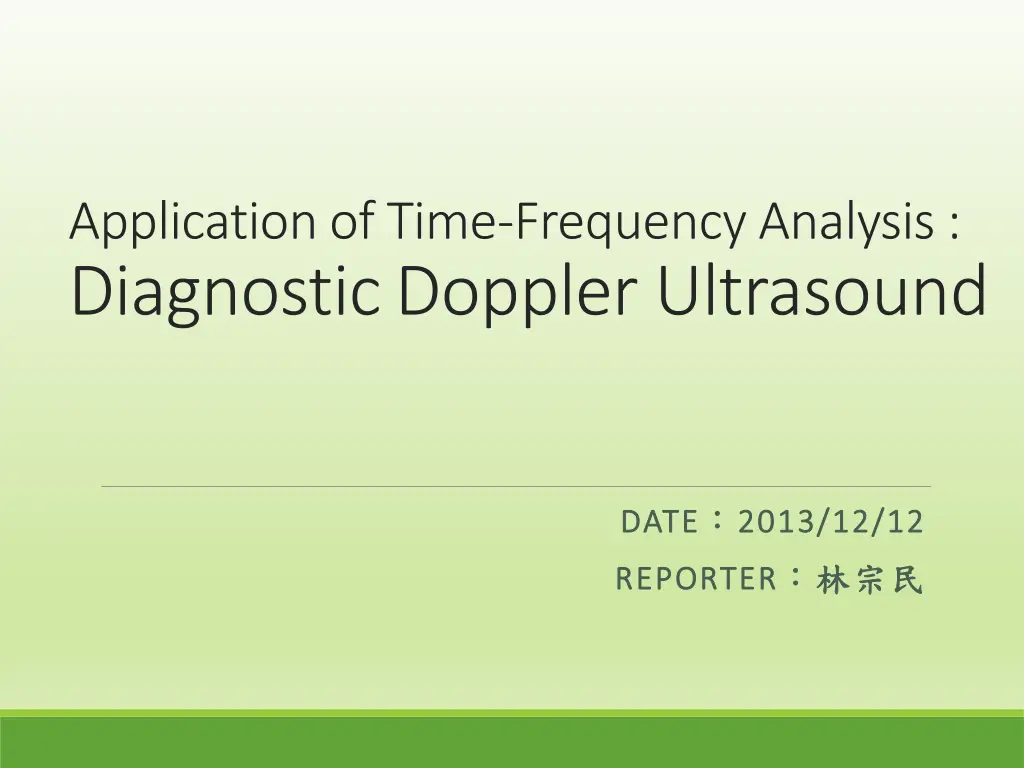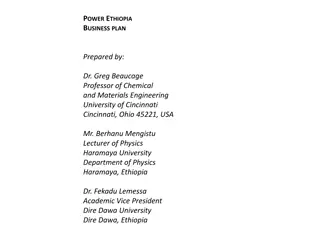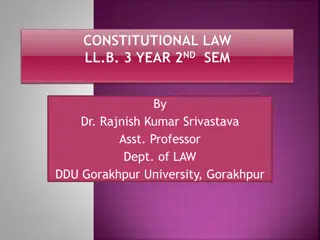
Diagnostic Doppler Ultrasound: Time-Frequency Analysis Insights
Explore the application of time-frequency analysis in diagnostic Doppler ultrasound, covering basic concepts, Doppler signals, spectral Doppler, and Doppler imaging techniques. Learn about the Doppler effect, ultrasound frequencies, and the interpretation of Doppler signals for accurate diagnosis.
Download Presentation

Please find below an Image/Link to download the presentation.
The content on the website is provided AS IS for your information and personal use only. It may not be sold, licensed, or shared on other websites without obtaining consent from the author. If you encounter any issues during the download, it is possible that the publisher has removed the file from their server.
You are allowed to download the files provided on this website for personal or commercial use, subject to the condition that they are used lawfully. All files are the property of their respective owners.
The content on the website is provided AS IS for your information and personal use only. It may not be sold, licensed, or shared on other websites without obtaining consent from the author.
E N D
Presentation Transcript
Application of Time-Frequency Analysis : DiagnosticDoppler Ultrasound DATE DATE 2013/12/12 2013/12/12 REPORTER REPORTER
Outline 1. Basic Concepts 2. Doppler Signal 3. Spectral Doppler 4. Doppler Image(Color Doppler, Power Doppler) 5. Conclusion
Ultrasound Longitudinal wave Frequency > 20 KHz Diagnosis Ultrasound 1~13 MHz Velocity 343m/s in air 1540m/s in tissue 6420m/s in aluminum http://i299.photobucket.com/albums/mm288/ wasi142/Biological%20classification/waves.jpg
Doppler Effect Frequency shift due to relative movement. Doppler frequency fd= f f0 2vcos c fd= f0, v c
Ultrasound Image B mode Brightness-mode Backscattered image Tomography http://content.answcdn.com/main/content/img/McGrawHill/Enc yclopedia/images/CE757525FG0010.gif
Doppler Signal Doppler Signal, xd(t) = iFT{ fd= fr ft} Typically ~kHz in diagnosis Doppler ultrasound. Continuous Wave Pulse Wave Measuring the time-varying Doppler shift Transmitting several pulses and sampling received signals
Doppler Signal Continuous Wave Transmitting monochromatic wave. Transmitted signal spectrum
Doppler Signal Continuous Wave Transmitting monochromatic wave. Received signals from moving tissue plus static tissue. fstatic fmoving Received signal spectrum
Doppler Signal Continuous Wave Transmitting monochromatic wave. Received signals from moving tissue plus static tissue. Demodulation and filtering. fstatic fmoving Doppler signal spectrum
Doppler Signal Continuous Wave Transmitting monochromatic wave. Received signals from moving tissue plus static tissue. Demodulation and filtering. fmoving Doppler signal spectrum
Doppler Signal Pulse Wave Transmitting several pulses. Multi-gate sampling.
Doppler Signal Pulse Wave Transmitting several pulses. Multi-gate sampling. Doppler signal
Spectral Doppler (Sonogram) Continuous wave or Pulse wave Combining B-mode ultrasound with pulsed wave Doppler STFT has been commonly used. Unbalanced Sampling with 50% overlap. nS Q + ( ) ( ) ( x p ) 2 j pm = , ( ) X n m w nS p e f t f p nS Q = http://en.wikipedia.org/wiki/File:SpectralDopplerA.jpg
Simulation Analysis Simulated Doppler signal. fMax(kHz) = 3.5sin 2 f1t + 1, 0s t 0.3s Using STFT, Cohen s class Distribution. Choi-Williams Distribution Bessel Distribution Cone-Shape Distribution 4000 3000 2000 Power Spectral Density S(t,f) 1000 Amplitude (mv) 500 450 0 400 -1000 350 Frequency (Hz) 300 -2000 250 -3000 200 150 -4000 0 0.5 1 1.5 2 2.5 3 100 Time (s) 50 500 1000 1500 2000 2500 3000 Time (s)
Simulation Analysis 2500 2500 2000 2000 Frequency (Hz) Frequency (Hz) 1500 1500 Choi-Williams Distribution STFT 1000 1000 500 500 0 0 0.05 0.1 0.15 0.2 0.25 0.3 0.05 0.1 0.15 0.2 0.25 0.3 Time (s) Time (s) 2500 2500 2000 2000 Frequency (Hz) Frequency (Hz) 1500 1500 Bessel Distribution Cone distribution 1000 1000 500 500 0 0 0.05 0.1 0.15 0.2 0.25 0.3 0.05 0.1 0.15 0.2 0.25 0.3 Time (s) Time (s)
Simulation Analysis 2500 2500 2000 2000 Frequency (Hz) Frequency (Hz) 1500 1500 Choi-Williams Distribution 1 STFT 0.9 1000 1000 0.8 0.7 500 500 Correlation coefficient 0.6 0 0 0.5 0.05 0.1 0.15 0.2 0.25 0.3 0.05 0.1 0.15 0.2 0.25 0.3 Time (s) 0.4 Time (s) 2500 2500 0.3 2000 2000 0.2 0.1 Frequency (Hz) Frequency (Hz) 1500 1500 Bessel Distribution Cone Distribution Method Bessel Distribution Cone distribution 0 STFT Choi-Williams 1000 1000 500 500 0 0 0.05 0.1 0.15 0.2 0.25 0.3 0.05 0.1 0.15 0.2 0.25 0.3 Time (s) Time (s)
Color Doppler Combining B-mode and Doppler signal. Pulse Wave Multi-gate system. Velocity and direction of blood flow are the desire information. 2 spatial dimension + 1 temporal dimension amount computation. Auto-correlation method for calculating average frequency.
Power Doppler Combining B-mode and Doppler signal. Pulse Wave Multi-gate system. Total power of Doppler signal. Indicating the flow density information. Not T-F analysis
Conclusion Image is 3-D signals. It s not proper to use T-F analysis. Spectral Doppler is 1-D signals. T-F analysis has been used to measure the blood flow. In practice, diagnosis signals are more complex than simulated signals, and more noise. Statistic methods are used.
Reference The Difference Between Colour Doppler Velocity Imaging and Power Doppler Imaging, W. N. McDicken and T. Anderson, Eur J Echocardiography(2002)3,240 244 Time-Frequency Analysis for Doppler Ultrasound signals, , http://djj.ee.ntu.edu.tw/Tutorial_Time- Frequency%20Analysis%20for%20Doppler%20Ultrasound%20Signals.docx. Physics and instrumentation of Diagnostic Medical Ultrasound, PETER FISH, 1990. Evaluation of fetal arrhythmias from simultaneous pulsed wave Doppler in pulmonary artery and vein, Julene S Carvalho, Federico Prefumo, Valentina Ciardelli, Shanthi Sairam, Amarnath Bhide, Elliot A Shinebourne, 2007. The Physical Principles of Doppler and Spectral Analysis, Peter N. Burns, PhD, J Clin Ultrasound 15567-590. NovemberlDecember 1987.




